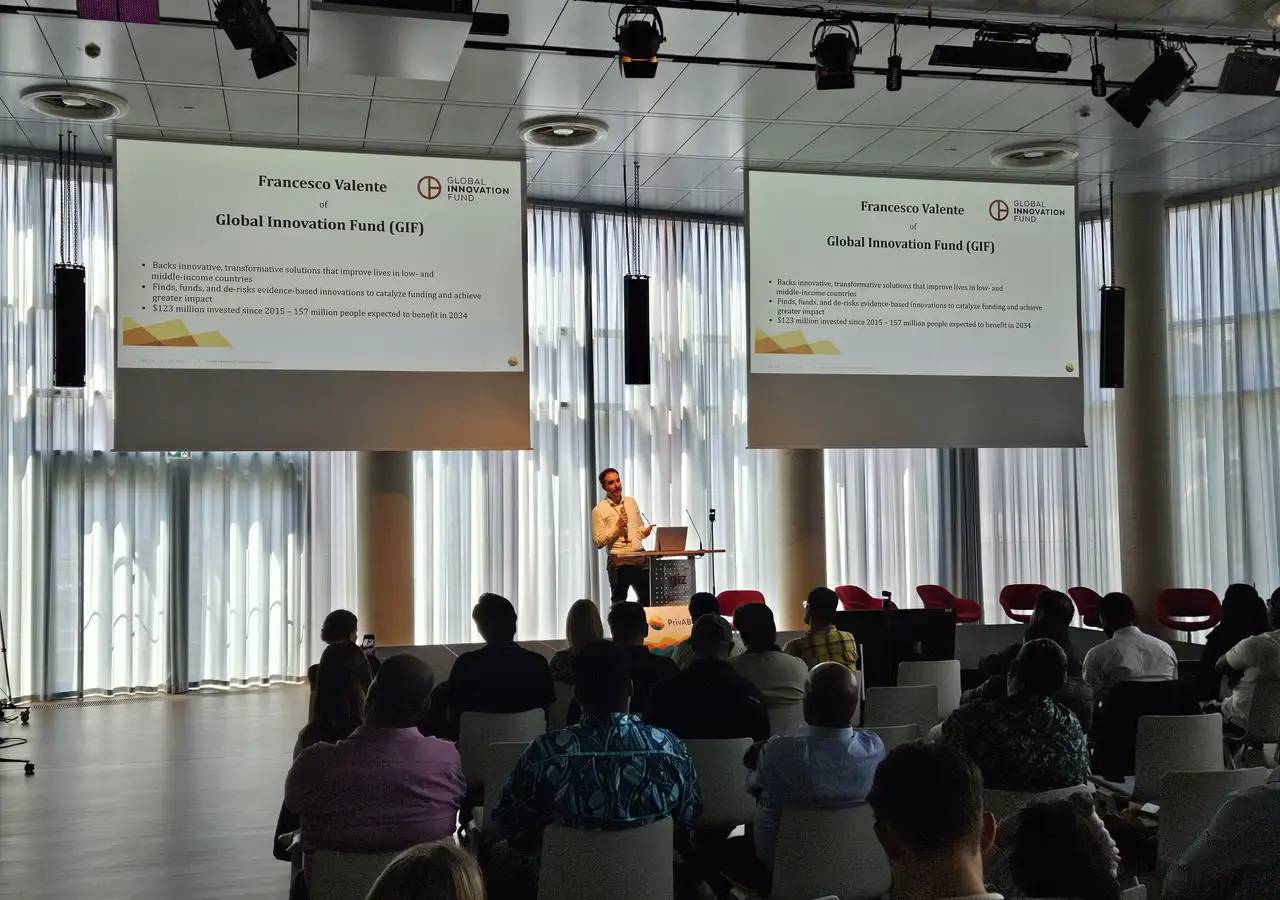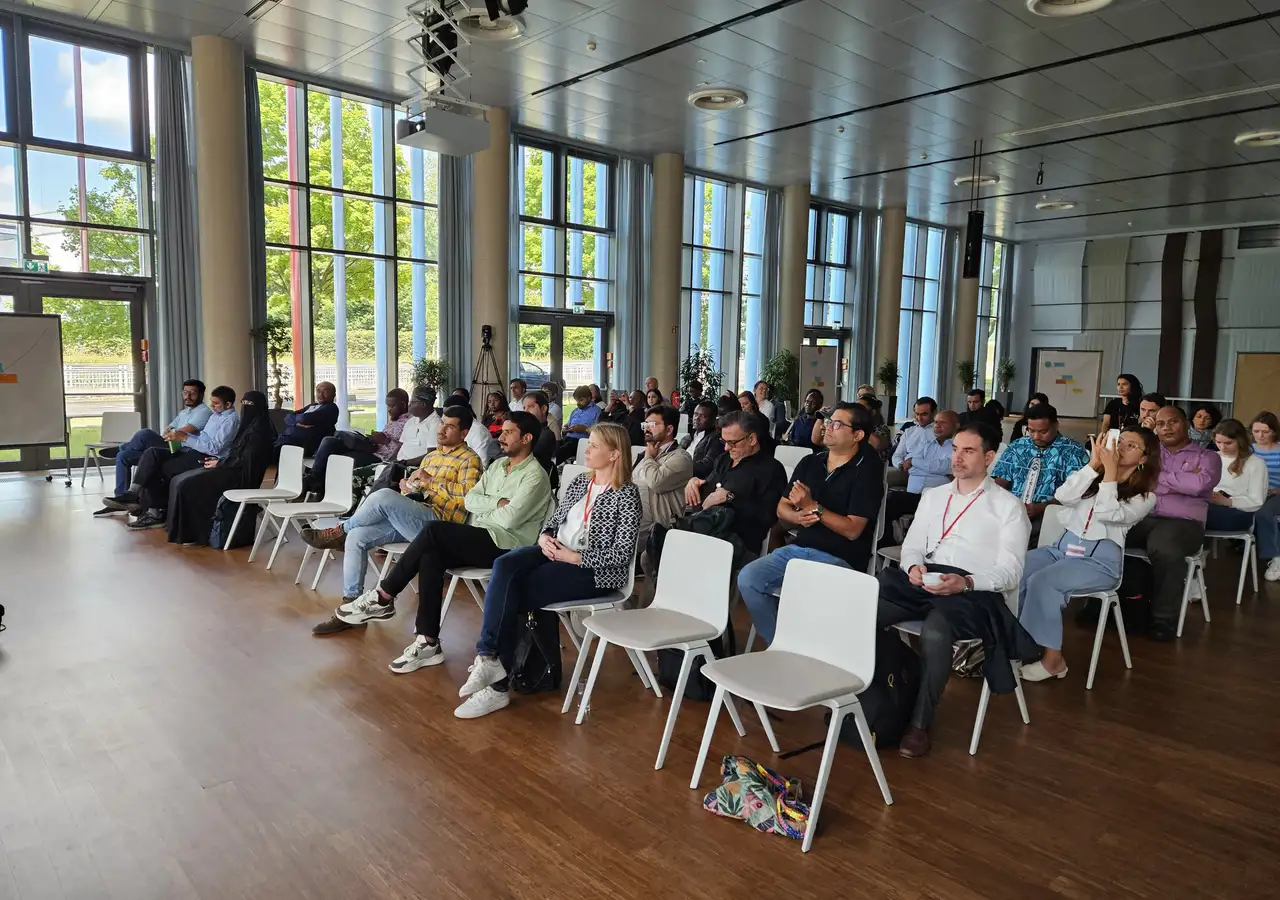Why GIF's Growth Fund is investing in climate adaptation.
Jul 29, 2025
Why invest in climate adaptation?
Climate adaptation, equipping countries with long-term resilience to the growing challenges posed by climate change, has become a strategic priority for many development funders. Recently, Francesco Valente, GIF Investment Director, spoke at the German Agency for International Cooperation (GIZ) about why GIF’s Growth Fund is investing in adaptation, our approach to ecosystem building in the climate adaptation space, and key ecosystem developments to keep in mind.

Why GIF’s Growth Fund is investing in adaptation
Poverty reduction and resilience
Climate shocks disproportionately affect the poor. Investing in adaptation builds income-earning capacity and improves access to public and financial services, enabling communities to bounce back from shocks more quickly.
High economic returns
Investments in climate adaptation offer compelling risk-adjusted returns. For every dollar spent, we could see $2 to $10 in net social benefits. For instance, spending 3% more upfront to climate-proof infrastructure like roads, bridges, and water systems can bring in $4 in benefits for every $1 invested. A $1 trillion investment in resilient infrastructure in developing countries could generate $4.2 trillion in social benefits.
Closing the financing gap
Despite these benefits, adaptation remains chronically under-funded. Of the $632 billion in 2019/20 global climate finance, only $46 billion went to adaptation, and just $1 billion of that was private capital, against UNEP’s estimate of $140–$300 billion needed annually by 2030.
Role of innovation and the private sector
Effective adaptation often requires coordinated public action alongside market-based solutions. For example, private-sector investments in resilient agricultural supply chains can cut transport costs and food waste, safeguarding food security during shocks.
How do we build and use the ecosystem?
We have several ways of finding new climate adaptation investment opportunities:
- We regularly invite proposals from the public
- We talk to other investors and market experts to find out about potential deals
- We attend events and network with other impact investors, charities, and technical partners
By working closely with others in the ecosystem, such as accelerators, foundations, and research institutions, we can improve our investment strategies, develop new solutions together, and create a stronger pipeline of potential investments.
For example, at one of these ecosystem events, we met the Proximity team. Their soil-health technology was a perfect fit for our focus on agriculture that can withstand climate change.

Shifts in impact investing
Context is key. The impact investing ecosystem has been affected by a number of recent developments and should underpin strategic choices.
Shift in philanthropic capital: Availability of highly concessional philanthropic funds has tightened. Use this kind of funding strategically. Leverage private-sector capital, de-risk early-stage ventures and crowd in follow-on investment. We must use this type of funding strategically to de-risk early-stage ventures and crowd in follow-on investment.
Accelerating consolidation and long-term partnerships: As capital tightens we are seeing an increased consolidation among funds, platforms, and portfolio companies. This dynamic favours deeper, longer-term collaborations with co-investors, corporate off-takers, DFIs, and development agencies that can pool expertise and resources, share risk, and drive systemic impact.
Focus on growth path: While early-stage support remains important, a critical bottleneck remains in the access to growth capital enabling proven enterprises to scale operations, enter new markets, and deepen impact.
Our new blended-finance vehicle, GIF Growth, exemplifies this targeted approach:
- Strategic use of concessional capital: Structure includes a first-loss tranche of philanthropic funds to absorb early defaults and attract private sector investors
- Private-sector mobilisation: Attracts commercial investors at near-market returns by sharing risk
- Blended finance: Brings together private and public sector players to maximise development outcomes (government agencies, DFIs, family offices etc.)
- Growth-stage focus: Explicitly targets expansion-stage funding needs of proven, impact-oriented businesses.
For announcements and updates on GIF Growth investments, subscribe to our newsletter, The Innovator below and watch our GIF Growth explainer video.
